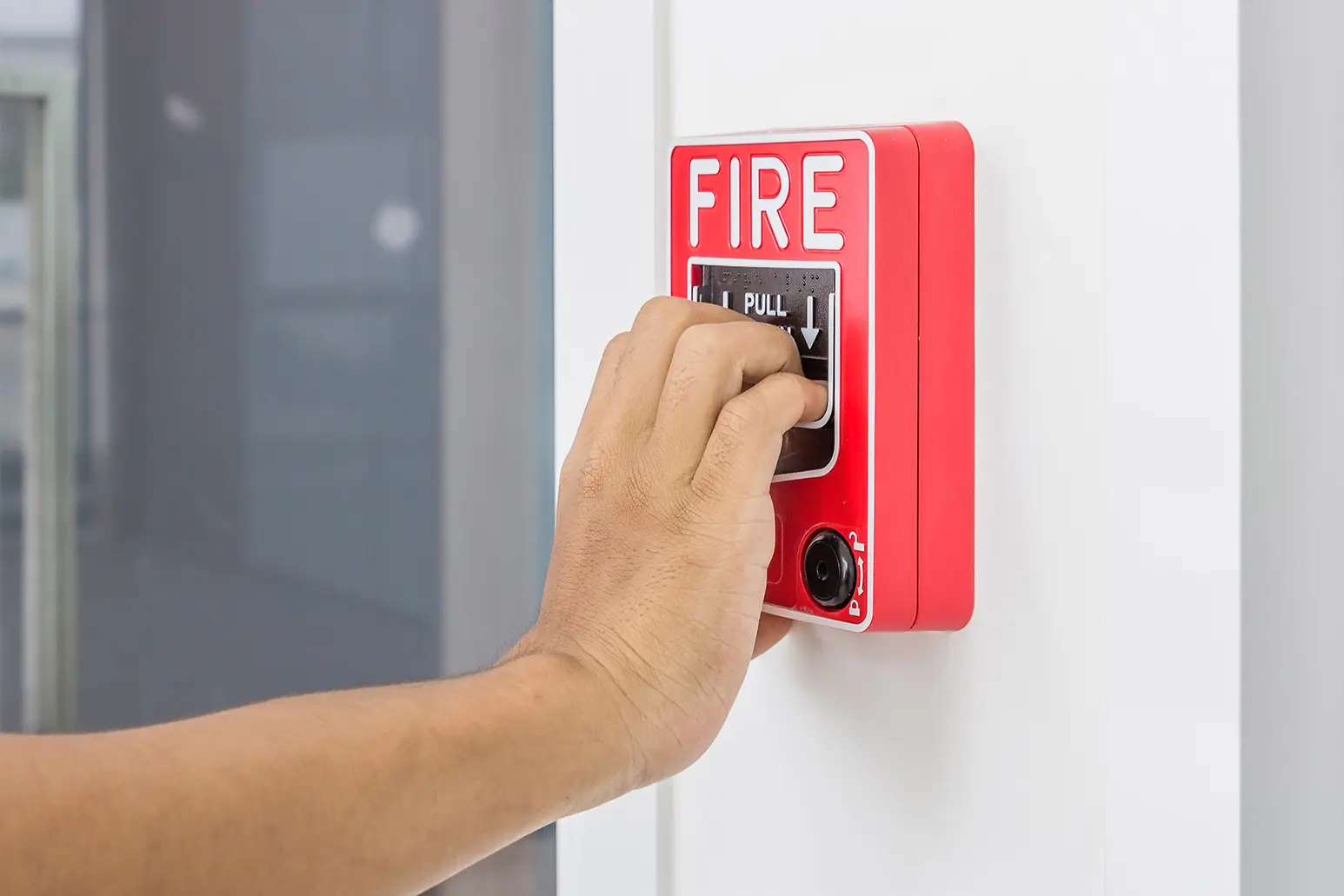Commercial properties face unpredictable emergencies, and success often hinges on how clearly information is delivered in the first minutes. When people hear a tone without context, they hesitate; when they hear a voice with clear, specific directions, they move. This article explores how modern audio solutions translate detection events into intelligible, actionable guidance that leads occupants to safety. You’ll learn how system components work together, what good speaker design looks like, and how voice alerts integrate with fire alarm control. Along the way, you’ll see why automated messages outperform sirens, how codes shape design, and how to evaluate performance so you can act with confidence and, when needed, Check Now.
Core Components of Modern Voice Evacuation Systems
A strong foundation starts with the hardware that generates, routes, and delivers messages in a crisis. Contemporary platforms pair a dedicated control unit with distributed amplifiers, prioritized audio inputs, supervised speaker circuits, and redundant power so messaging doesn’t fail when it matters most. At the heart is logic that maps events to zones, prioritizes announcements, and coordinates live paging with pre-recorded instructions. High-quality loudspeakers—ceiling, wall, horn, or line-array—convert that signal into intelligible sound tailored to each space. Together, these pieces make reliable communication possible, which is precisely what Voice Evacuation Systems are engineered to deliver.
From Amplifiers to Backup Power: What Matters
The difference between a compliant system and a resilient one often lies in supervision and redundancy. Intelligent amplifiers monitor for shorts, opens, and degradation on speaker lines, and they can automatically switch to spare channels to maintain coverage during a fault. Batteries sized for required standby and alarm durations ensure the system continues operating after a power loss, while monitored chargers maintain health between tests. Prioritization logic guarantees that the most critical message—such as an evacuation order—overrides background music or routine announcements, even in complex, multi-tenant facilities. Network connectivity enables centralized control, remote diagnostics, and integrations with other building systems without sacrificing security or uptime.
Designing Effective Speaker Placement for Clear Messaging
Speaker placement isn’t guesswork; it’s acoustics, coverage, and consistency. The goal is intelligibility—people must understand words clearly, not just hear noise. Designers consider room geometry, reverberation, ambient noise, and surface finishes to select the right speaker types and spacing. Open offices with reflective surfaces may need closer spacing and directional patterns to limit reflections, while atriums might benefit from line arrays aimed away from hard glass. Uniform sound pressure levels minimize “hot and cold” spots, so no one strains to listen while others are overwhelmed.
Practical Layout Strategies
Start by mapping zones to occupancy and risk, then align speaker aiming and height to the listener’s ear level. For ceilings, even grids and consistent mounting heights help achieve uniform coverage, whereas wall-mounted horns in warehouses should be angled to avoid excessive reflections from racks and high-bay structures. Don’t overlook noise sources: loading docks, kitchens, and mechanical rooms can mask audio, so higher output or additional speakers may be needed to maintain audibility and intelligibility margins. Commissioning should verify results using objective metrics like STIPA or other intelligibility indices and subjective listening checks at representative locations. The aim is to create a sound field that delivers crisp consonants and clear phrasing so instructions are acted upon without delay.
Integrating Voice Alerts With Fire Alarm Control Panels
In most commercial buildings, the voice system and the fire alarm control panel work hand in glove. The fire panel detects events through initiating devices and triggers the voice controller to play the correct messages to targeted zones. Integration points range from relay contacts and data buses to networked protocols that carry rich event data and precise cause-and-effect logic. This synergy allows staged evacuations, area-by-area control, and different instructions for fire, gas release, or weather emergencies—all without manual intervention. Done well, integration ensures the right message reaches the right people at the right time.
Interoperability and System Logic
Clear rules define who hears what and when. Priority schemas allow life-safety announcements to override noncritical audio sources, while partitioning keeps an alarm in one tenant space from unnecessarily evacuating another. Supervision across the link between systems ensures that cabling faults, amplifier failures, or configuration errors are reported instantly, not discovered during an incident. Engineers also coordinate the voice system with auxiliary functions like elevator recall, smoke control, and door release so the building’s physical responses match the spoken guidance. The result is a coordinated response where audio, mechanical systems, and egress routes reinforce one another.
Benefits of Automated Voice Instructions During Emergencies
Automated messages remove ambiguity by stating the hazard, the action, and the route—elements sirens can’t convey. Clear phrases like “Use stairwell B to exit the second floor” accelerate decision-making and reduce crowd milling, which is known to delay evacuation. Pre-recorded audio ensures consistent tone, pacing, and language choice under stress, while live paging remains available for real-time updates. The same platform can deliver shelter-in-place instructions for a chemical spill, or staged evacuation for a fire, keeping occupants informed as conditions evolve. The ability to clarify instructions quickly can be the difference between confusion and coordinated movement—another reason to Check Now that your messaging covers varied scenarios.
Real-World Outcomes
Data from drills and post-incident reviews repeatedly show improved evacuation times and fewer bottlenecks when voice guidance is present. People are less likely to return for belongings or cluster at exits when they hear authoritative, specific directions. Accessibility benefits are significant as well; voice instructions assist people with visual impairments and can be paired with visual text for those with hearing loss. Multilingual messages, alternated at set intervals, better serve diverse populations, especially in retail and campus environments. By making the next step unmistakably clear, automated voice instructions transform a building’s alarm from a noise into a plan.
Meeting Code Requirements for Emergency Communication
Codes ensure that emergency communications are not only audible but understandable. In many jurisdictions, standards define minimum sound levels above ambient noise, specify survivability for cabling and equipment, and set performance benchmarks for speech intelligibility. Designers must match system topology to building risk: areas of refuge, assembly spaces, and high-rise floors often have additional requirements for coverage and power. Acceptance doesn’t hinge on equipment alone; it requires documented testing that proves messages reach occupants with the clarity intended. Following these frameworks translates technical design into consistent, enforceable safety outcomes.
Documentation and Testing Essentials
Project teams should define audibility and intelligibility targets in the design narrative and verify them with measured results during commissioning and annual inspections. Test plans list sample locations, ambient conditions, and methods, while records capture adjustments like amplifier gains or speaker repositioning. Any renovation that changes room acoustics—new partitions, ceiling alterations, or added machinery—should trigger re-evaluation of performance. Clear ownership of inspections and impairments prevents gaps in coverage, especially in multi-tenant properties with evolving layouts. As Voice Evacuation Systems become more capable, documentation ensures that growing feature sets do not compromise the core deliverable: reliable, intelligible emergency guidance.
Improving Occupant Response Through Clear Audio Guidance
Communication science tells us that people comply faster when messages are short, specific, and authoritative. Under stress, working memory shrinks, so instructions must reduce cognitive load rather than add to it. Effective scripts identify the hazard, name the audience, and give the immediate action—then repeat at predictable intervals. Calm but firm delivery encourages trust, and consistent phrasing reduces interpretation time across repeated announcements. When plans, drills, and audio messages align, occupants respond more quickly and with fewer errors.
Message Scripting and Delivery
A practical pattern is: what’s happening, who’s affected, where to go, and how to get there—followed by confirmation that help is on the way. For example: “Attention on Level 4: Smoke has been detected. Proceed to Stairwell A and exit the building. Do not use elevators. Staff are assisting.” Fire scenarios may call for staged evacuation by floor, while severe weather events might instruct people to move inward and downward, away from glazing. Text-to-speech is useful for rapid updates, but many facilities prefer recorded human voices for warmth and clarity, especially in multilingual rotations. Aligning these choices with training materials and signage ensures Voice Evacuation Systems reinforce what people already expect to do.
Why Voice Systems Outperform Traditional Sirens in Safety
Sirens get attention; voice adds meaning. Tone-only alerts can’t distinguish between evacuate and shelter-in-place, nor can they direct people away from hazards like smoke migration or chemical releases. With intelligible instructions, facility teams reduce panic, prevent backflow at exits, and adapt guidance as conditions change. False alarms also carry less risk when a voice can quickly clarify status and request orderly verification rather than trigger a full building exodus. The difference is practical and measurable, and it’s why safety managers who want actionable communication often choose platforms that they can validate and Check Now for readiness.
Making the Upgrade Decision
Upgrading doesn’t require a rip-and-replace approach; many facilities add voice capability zone by zone, focusing first on assembly areas and high-risk spaces. Evaluating options should weigh intelligibility performance, amplifier redundancy, supervision depth, and integration path with existing detection and control. Consider lifecycle costs such as battery replacements, firmware support, and periodic testing, not just initial hardware spend. Training and drills should accompany deployment so occupants recognize message patterns and staff develop muscle memory for live paging and incident management. By aligning technology, procedures, and people, organizations build a safety posture that consistently outperforms siren-only solutions—and stands ready for whatever comes next.










